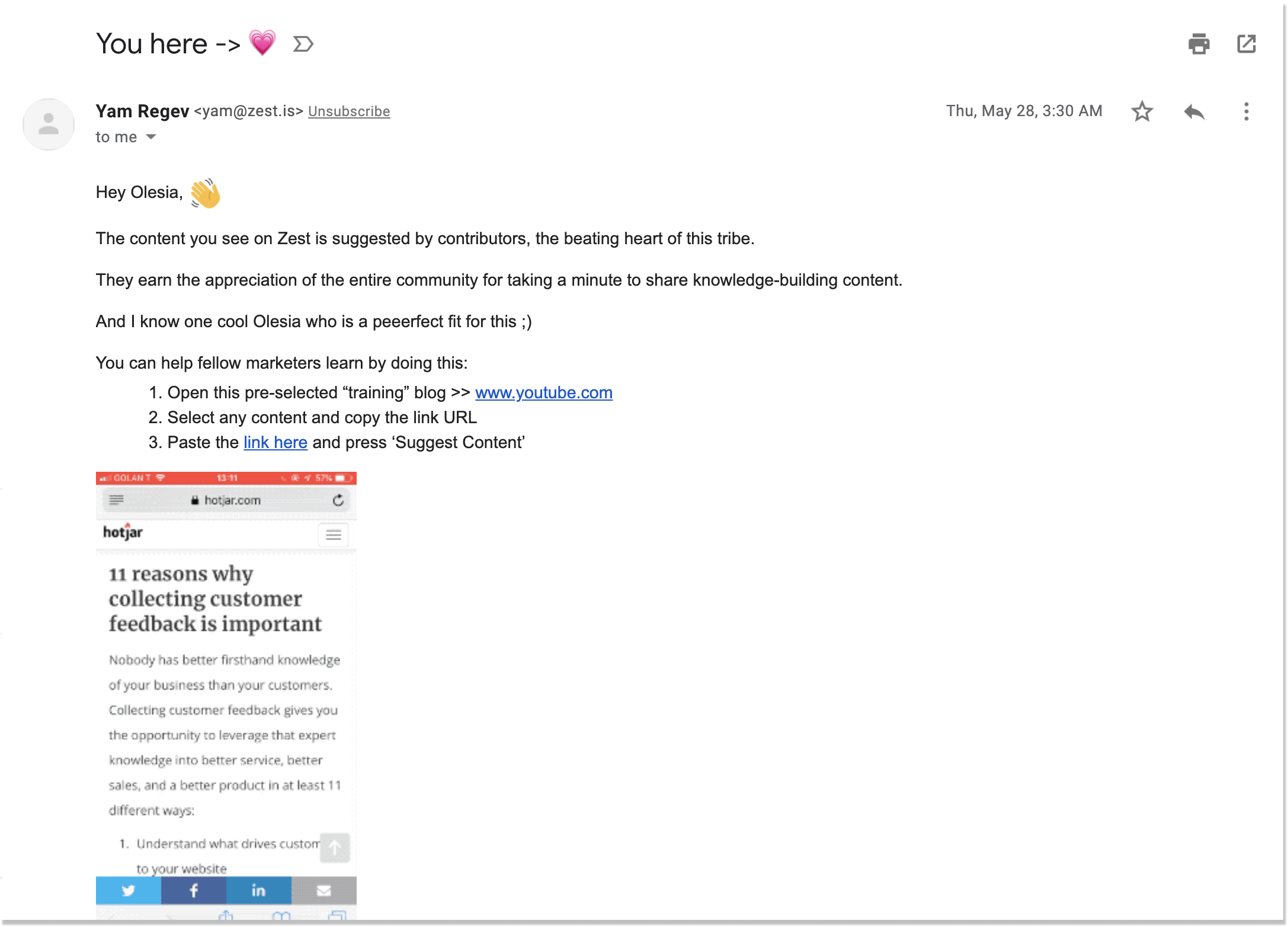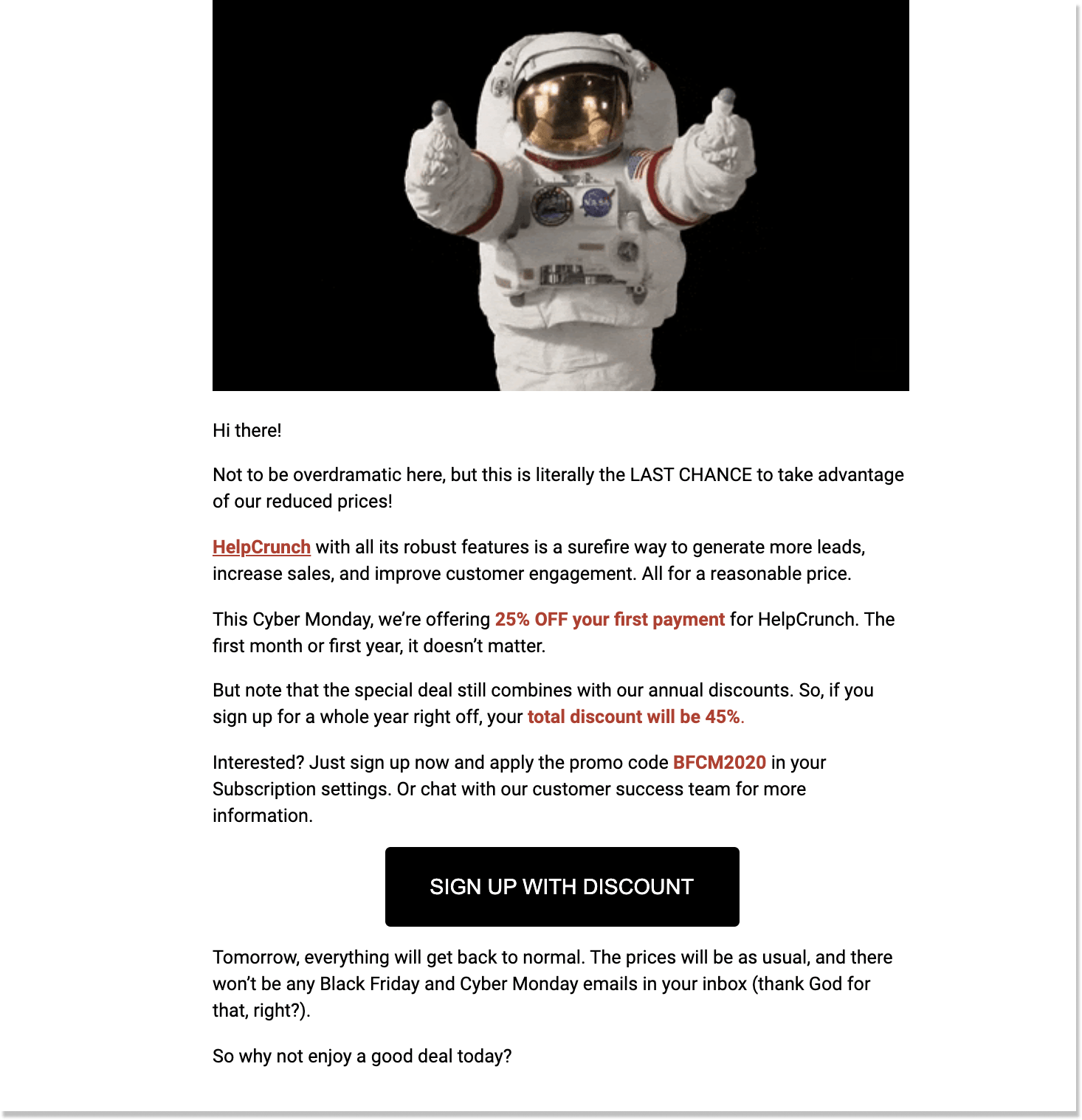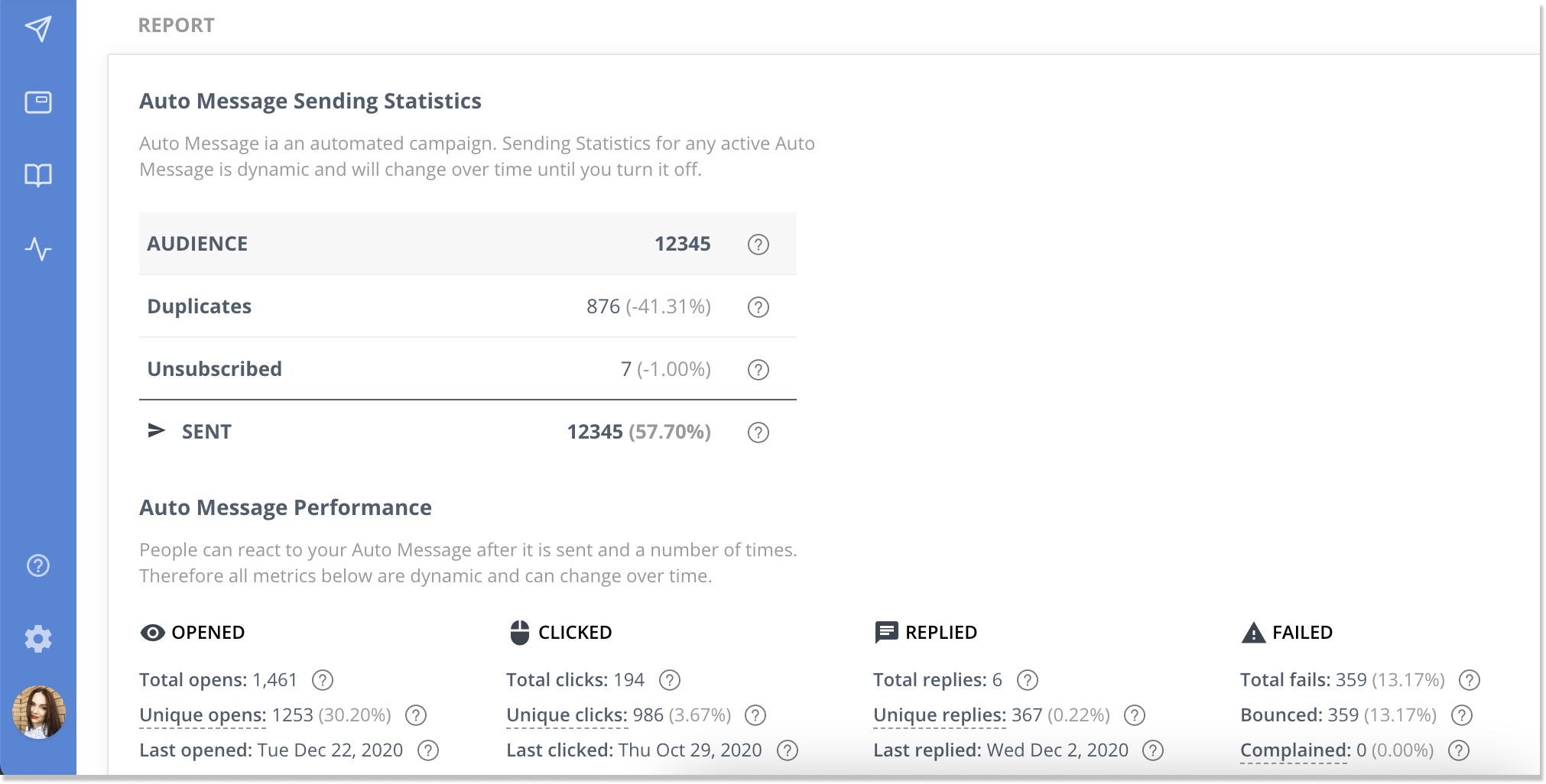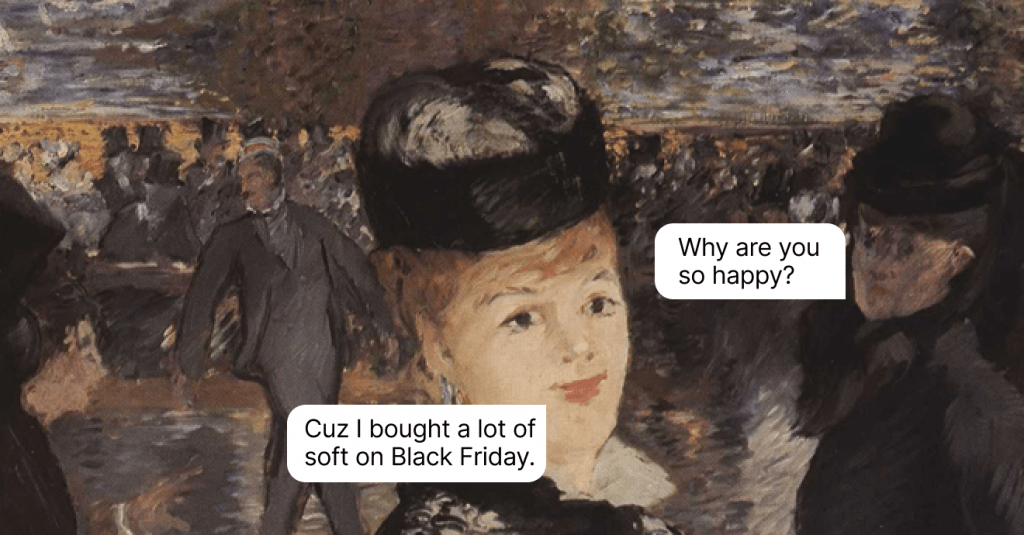7 B2B Email Marketing Best Practices That Actually Work
B2B email marketing can work wonders if done right. With that in mind, we've put together 7 most effective best practices that you can follow. Go over them!
Written by Olesia Melnichenko

If you think that sending emails has become a relic of the past, think again. Now, electronic mail is ruling the roost in the B2B marketing industry. To make you agree with me on this one, here are some numbers:
- 59% of businesses say that email is their most effective tool for revenue generation
- 58% of millennials claim their preferred communication channel is email
- 87% of B2B marketers confirm email is their top free organic distribution channel
As a B2B marketer, you have a window of opportunity to use email for nurturing prospects and converting them into loyal customers. But there is one hitch: if done incorrectly, your lists may end up in a spam folder. So, everything boils down to knowing B2B email marketing best practices for maximum results.
What is B2B email marketing?
Email marketing per se is electronic communication to boost awareness, build relationships with prospective or current clients, and generate sales.
As viewed from the B2B (business-to-business) email marketing strategies, you target campaigns to businesses instead of individual customers. In other words, it’s the concept that describes how to share valuable insights, maintain ongoing dialogue, and sell your products or services to other companies.
Each campaign you create and send out should offer you a chance to:
- Engage with your audience in the most effective way possible (by polishing email designs, writing strong subject lines, and personalizing your content)
- Contain relevancy in conversations (by establishing recipients’ interests)
- Process the overall results (by drawing attention to click-through, deliverability, and open rates)
“Why should I rely on B2B email marketing?” your question may be. I will present three uncompromised reasons:
- Emails are less pushy: compared to social media, for instance, email is the least intrusive way to have organic conversations and find out some details about clients.
- Emails are cheap: if you use them, you don’t spend much on advertising (both online or offline). It results in stellar ROI (return on investment).
- Emails are a great potential for word of mouth: if your products are well-liked by customers, the chances are they will refer it to their friends.
B2B vs B2C email marketing
The pressing question for many marketers is how B2B differs from a B2C (business-to-customer) email approach. Check out the table to catch the key differences:
| B2B Email Marketing | B2C Email Marketing | |
|---|---|---|
| 1. Length of buying cycle | It takes longer to turn prospects into leads because of more people involved in a decision-making process. Campaigns might involve multiple workflows. | It is simpler to build rapport with a client, a strategy may be built upon their impulsive natures. Campaigns here might include such a flow: open an email, click a CTA, surfing the landing page, making a decision. |
| 2. Tone of message | A professional, formal, and objective tone. The financial side of the product is highlighted. | A more informal, casual conversation style is allowed. Scarcity triggers are often included in an email. |
| 3. Email content | The content addresses the industry’s pain points, the sender is the ideal company for solutions. Webinars, white papers, case studies are prevailing here. | The content may contain visual elements for driving emotions and fun. Offers, discounts, and other deals for a limited time for prompt responses. |
| 4. Timing | Tuesday, Wednesday, Thursday afternoon | Saturday noon till Tuesday morning |
7 B2B email marketing best practices
Now that we’ve established the “why” of B2B email marketing, it’s time to uncover the “how” part. To get you started, we’ve prepared an in-depth list of hacks below:
1. Segment your customers
Have you ever felt pain over low open rates after launching yet another email campaign? That’s because there was a flaw in your actions. The greatest way to dip your toe in the world of business-to-business email marketing is to classify your audience properly. Your subscribers may be not only at different stages of their customer journey but also look for various solutions.
If you send the same message in bulk (even if it’s personalized to some degree), be ready to fall on deaf ears. Your email contact list should be segmented into smaller groups with common traits such as industry, location, company size, web behavior, stage in the buyer’s journey to name a few. Almost every broadcast emailer offer comprehensive segmentation features, so you can segment your recipients by whatever criteria you find relevant for your goals.
Personalization is no longer nice-to-have in B2B email marketing. 55% of marketers claim it leads to higher conversion rates and future growth. Why is it so beneficial? Well:
- It adds to customer satisfaction
- It results in better engagement
- It increases open rates
- It meets subscribers’ expectations
One of the well-executed email personalization examples is by Zest: they made it right by crafting a super heart-warming (literally) subject line, mentioning the name, and writing a sweet and compelling copy. Plus, they added a small how-to instruction. No wonder such a trick will build brand love, trust, and good feeling.

2. Nail the subject line
33% of users open an email based on..bingo!: its subject line. Obviously, it’s the bread and butter of any successful email campaign.
Compare:
❌ Guaranteed to increase your click-through rates
✅ 7 ways to help you boost click-through rates by 15%
I’m guessing you get the idea of the most descriptive and convincing subject line. So, the whole point is making it relevant, catchy, and letting your audience know what to expect from that email.
Think of your email subject lines as of a movie trailer: if you can’t hook your audience with a 2-minute clip (in our case, with a dozen of characters), the mission is failed. Spend as much time coming up with an enticing message title as you do on the emails themselves.
Here are the main B2B email marketing best practices on how to write a strong subject line:
- Keep it straight-to-the-point
- Ditch spam words (big bucks, get paid, fast cash, no interest, not junk, etc.)
- Use emojis (don’t go over the top though)
- Limit punctuation
- Create a sense of urgency
- Do tell recipients what’s inside
Here is an example of the blog email newsletter from HelpCrunch. Why is it so cool? Just because it REALLY is ? Seriously though, look at the subject line. It has everything from the value to a Christmas tree emoji and even a festive mood. Besides, you realize right away that you get more than just a boring list of some slogans (NOT our case). By the way, the content deserves the highest attention: authentic images, readable blocks, and links.

3. Brush your content
The recent research showed that 51% of B2B customers want content that helps them in their decision-making and benchmarking. They want to be educated, not sold to, so rather than making your email content seem promotional, it should help your subscribers to do their jobs more effectively and to see you as a useful resource.
When people subscribe to your email list, they expect to get VALUE from you. But that doesn’t mean you can bang out emails and call it a day. Everything revolves around establishing trustworthy customer relations, creating relevance for your readers, and producing content that is focused on your clients’ interests.
It’s important to strike a balance here. In the B2C sector, all you need is building bridges with your clients by using humor, emojis. That is, with a more informal style.
Speaking of email marketing in B2B, you send messages to the decision-makers of your target companies. So, keep the tone nearly formal. Sure, adding a little humor won’t get in the way. Though, your aim is to get their attention on the valuable info about your offers.
Bear a few tips to help keep your content on point in mind:
- Make sure you have a value to share
- Keep your messages clear, simple, and concise
- Create a flawless copy (hire a professional writer to do it if needed)
- Go easy on sales-oriented messages
- Allow every email subscriber to customize the types and frequency of the messages they receive
- Consider a great design that will grab your readers’ attention from the get-go
4. Add a CTA
Our B2B email marketing tips won’t be complete without mentioning the intrinsic part: calls-to-action (CTAs).
The statistics say that 87% of B2B marketers use CTAs to nurture and generate leads. You see, emails are tools for having an ongoing conversation with your audience. That’s why everything you put in there should lead to a single, most powerful action the user should perform. Actually, you can take advantage of certain CTA power words to make the most of it:
- Contact
- Save
- Buy
- Join
- Upgrade
- Sign up
- Explore
- Book
- Now
- The list can go on and on
When adding a CTA to your email, don’t take it too far. In fact, let me provide you with a vivid example:

This is the Cyber Monday last call email we sent a few weeks ago. Except for the value-based content, this piece also includes a clear and easy-to-see CTA. The button is located after the main message when all’s been said and done, driving the nail to head so to say.
The CTA’s shade plays a big part, too. Black contrasts with the white email layout, which puts it on the winning side. Find out how colors impact emotions and behavior before crafting your call-to-action.
So, let’s recap:
- Make sure your button is visible
- Locate it wisely
- Choose color thoughtfully
- Test the button before sending an email
5. Send follow-ups
Effective B2B email marketing can’t be imagined without regular follow-ups. Statistics suggest that 24% of sales emails are opened and just 20% of leads are followed up. In fact, a campaign with just 1 follow-up mail can convert 22% more prospects. Can you spot a massive loss of potential opportunities here?
In most scenarios, you send follow-ups right after your first interaction. Unfortunately, it may not bring craved results. Just wait for 3 days before shooting a message. The frequency matters, too. It’s actually recommended to have at least 5 follow-ups up your sleeve (a non-sales conversation will most likely happen afterward).
A good follow-up email doesn’t simply say “Hey, I’m just following up”. It adds more value with every subsequent message. Our team has already mastered the art act. We send follow-ups when the user trial is expired, to remind about the holiday deals, or to point out possible changes with the product. Here’s how such messages look like most of the time at HelpCrunch:
Trial expires
Heey {customer’s name},
I noticed you’ve played around with HelpCrunch for a bit, but haven’t had a chance to use it to a full extent.
Would you be interested in extending your trial by 7 more days so you can test all the tools?
Just reply to this email and I’ll extend your trial.
P.S. Also happy to give you a discount code if interested.
Best,
Logan, Sales manager at HelpCrunch
Product changes
Hi {customer’s name},
Just wanted to remind you that your current version of the HelpCrunch SDK will become inactive on October 9.
As I’ve already mentioned in my previous email, we had to completely rebuild our SDKs due to the huge interface renovation. This is a one-time situation and all further updates will happen with the support of all previous versions as usual.
But now we will have to automatically update your account unless…
Unless you drop us a line beforehand and we will update your app with our new SDK v3. together. Our team will guide you through the whole process and help with any issue you might have.
You can find more information about our new Android and iOS SDKs in the help center.
Get in touch with us ASAP to make this transition go smoothly and hassle-free.
Best,
Konstantine, Customer Success Manager at HelpCrunch
Performance reports
Hey {customer’s name},
Time to check your first performance report.
In the first trial week of using HelpCrunch, you’ve had:
– {custom_data:Total conversations} conversations with customers
– {custom_data:Closed conversations} closed conversations
– {custom_data:Last 30days satisfaction}% customer satisfaction
– {custom_data:Total articles in KB} knowledge base articles
You can view your detailed customer support report here [custom link]
Now here are 3 quick tips to help you improve those numbers:
– Add a proactive auto message on the website pages that have the highest drop-off % (e.g. your Pricing page) – those are the best opportunities to proactively invite users to talk to you and instantly increase conversions.
– Create saved responses to be able to insert canned answers to frequently asked questions in customer conversations in one click and close them faster.
– Add new knowledge base articles based on failed searches report. No need to spend time coming up with ideas for fresh articles when your customers provide you with the ones they’ve searched for but couldn’t find.
If you need any help with setting up any of those, just let me know 😉
—
Best regards,
Konstantine
Customer Success Manager at HelpCrunch
6. Mind the timing
To hit the mark with your B2B email marketing campaign, choose the proper timing. We at HelpCrunch have already figured out the best time to shoot messages with a trial-and-error method: in the mornings (Tuesday or Thursday).
Many experts believe that these two days are ideal for that purpose. And it stands true: who wants to even open an email on Friday evening when everyone is having rest or Monday morning when your coffee is cooling down? ?
But no pushing. These are just the ideas to give you a head start. The real game is in identifying the best time for your B2B customers, and for this, you’d better analyze your data.
7. Track your results
The big mistake is to check the progress at the end of a reporting period. Monitor your results regularly — weekly, monthly, quarterly — to see what works and what doesn’t right away and adjust email campaigns accordingly. Probably, you will have to take a completely different course in your B2B email marketing strategy, but at least you will learn from your mistakes.
Arm with the right tools to succeed here. Being a comprehensive live chat solution, HelpCrunch also allows you to automate your email marketing flow and keep close tabs on the numbers carefully. Thanks to its in-depth auto and manual messages reports, you can have a bird-eye-view on the status of your campaign to tweak it if needed. Just set your message right by choosing customer segments, wait time, a sender, and drop it.
Plus, HelpCrunch shows you detailed statistics on the whole amount you sent over the last 30 days. (including emails from chat, manual, auto, and unseen messages).

Bottom line
Email may be old-fashioned, but it’s not over the hill. If you want to achieve results in B2B email marketing, you should keep in mind that: segmentation rules, your content should be of much value to your subscribers, automation might be the key, and the right timing is your best friend.
Take a step forward to an engaged client base, a well-thought-out bottom line, and massive business growth with the ultimate solution. Create a free account with HelpCrunch to see what I’m talking about.





